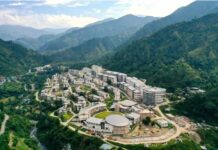By Dr Rohan Dutta, Associate Professor, Anant School For Climate Action, Anant National University
“Our Earth is more than just land, water, and sky. It is a complex physico-chemical system, where the atmosphere, hydrosphere, lithosphere, and biosphere are deeply intertwined. Every process, from the carbon cycle to ocean circulation, is part of a dynamic, balanced network. When we alter one part of this system, even slightly, the effects ripple outward. Often, these changes aren’t immediate because Earth’s systems have a large inertia, but once they respond, the consequences are profound and far-reaching.
For example, when we burn fossil fuels, we emit carbon dioxide and particulate matter into the atmosphere. While these may seem invisible or benign at first, they accumulate, altering the planet’s radiative balance, intensifying the greenhouse effect, and driving long-term shifts in climate. These changes manifest slowly, through rising global temperatures, sea level rise, and ecosystem disruptions, a phenomenon scientists refer to as a lagged response. Even more concerning is what’s known as hysteresis: where the path to damage is fast, but recovery is painfully slow, or sometimes irreversible. Antarctica’s melting ice is a clear example. Scientists now believe we’ve passed a tipping point, where natural feedbacks (like reduced albedo) will continue the melting, even if emissions are drastically reduced. The resulting sea level rise could take centuries to play out, but millennia to reverse.
This World Environment Day, let’s recognise that every action, however small, feeds into this larger system. The Earth gives us stability, sustenance, and life. In return, it asks only for awareness, restraint, and care.”


































